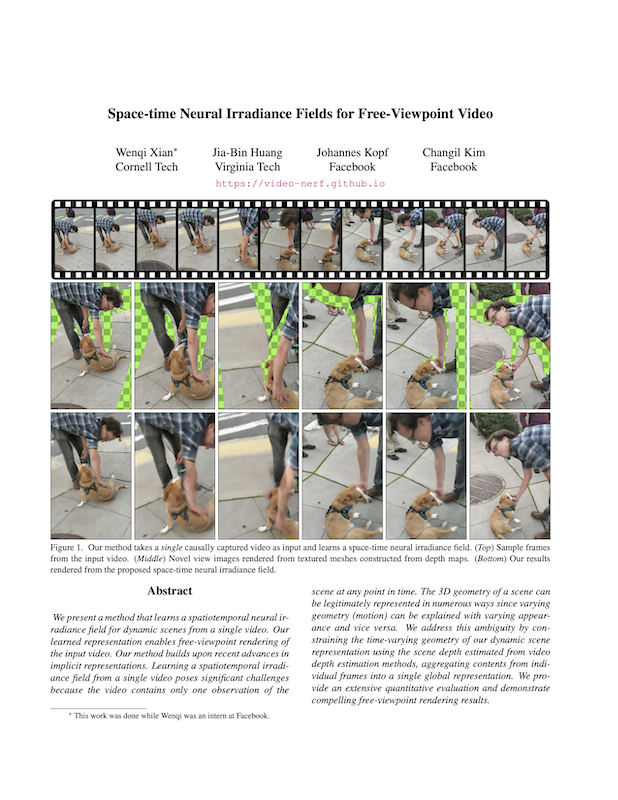Results
Input Videos are retimed to match the speed of the result videos. Some are slowed down to better reveal details.
Meshes results are rendered using textured meshes that are each constructed from a single input depth map, respectively.
For Inpainted Meshes, the holes revealed by disocclusions in the mesh renderings are inpainted using a state-of-the-art video inpainting method. Every 4th frame is used for video inpainting due to memory issues and the resulting videos are played back 4 times slower to compensate for the missing frames.
NeRF + T refers to the original NeRF with an additional time dimension added, but trained without our losses. Viewing directions are not used to train these models.
Ablation Studies
NeRF + T: The baseline NeRF model with an additional time dimension added, but trained with only the color reconstruction loss. Viewing directions are not used.
Ld: Trained with our depth reconstruction loss (Equation 5).
Le: Trained with our empty-space loss (Equation 7).
Ls: Trained with our static scene loss (Equation 8).
BibTeX
@inproceedings{xian2021space,
author = {Wenqi Xian and Jia-Bin Huang and Johannes Kopf and Changil Kim},
title = {Space-time Neural Irradiance Fields for Free-Viewpoint Video},
booktitle = {Proceedings of the IEEE/CVF Conference on Computer Vision and Pattern Recognition (CVPR)},
year = {2021},
pages = {9421--9431},
}
